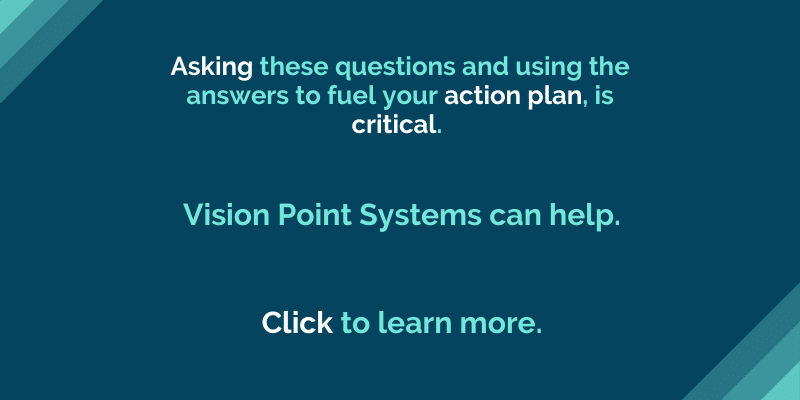Assess the Current System
Low code platforms offer many benefits over traditional enterprise software deployments. Most importantly, low code platforms allow development teams to focus on the business needs of users to achieve faster transformation, decrease operational costs, and improve organizational agility. In fact, “the top three business goals cited for implementation are achieving cost savings (46%), improving performance metrics (46%) and improving efficiencies in business transactions (40%).” Stats here.
Oftentimes, people get so wrapped up in attaining these benefits through switching platforms, they haven’t analyzed what improvements would help their current system. Performing this evaluation will help guide the design and implementation process for customers and consultants. Without doing this, it’s going to be difficult to know the value of the new system you’re implementing.
Here are some kick-starter questions we like to ask clients to help discover the root of performance problems.
Does your system ever experience technical performance issues?
If yes, when is that occurring? Do your users have to wait around for processing to complete or get locked out of the system due to crashes?
Different issues relate to different problems. Understanding the performance metrics you have will help your team set your goals for the next system. Performance issues include a user interface that is querying too much information or a system that’s not equipped to handle a certain number of users.
What metrics are you using to measure your system?
How many tickets or cases are you completing in a day? How long on average does it take for your users to complete specific processes?
These answers speak to your organization’s priorities and what should be the focus for improvement.
Are there any processes that could be improved by automation?
Repetitive tasks that use up a lot of employee time are always a common fit. Automation is designed to make an end user’s life easier and speed up processes.
Take action.
Asking these questions and using the answers to fuel your action plan is critical. If you don’t have the resources or capabilities within your organization to conduct a deep-dive analysis, it’s best to get a consultation from an experienced team who can understand your organization (such as your processes, metrics, current system) to provide the best low-code solution.

